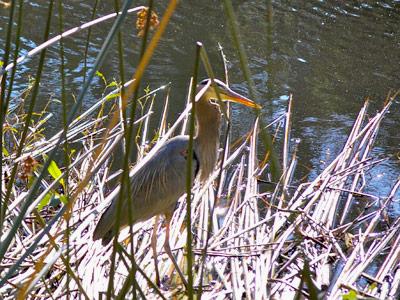Nature Notes: Visiting San Francisco

Three thousand miles away in San Francisco, and the first bird I see is Corvus brachyrhynchos, the common crow, the same species that we have on the South Fork, doing what it does best here and there: raiding nests, making a lot of noise, attacking hawks and such, and in turn being chased by small birds like blackbirds away from nesting sites. The more things change, the more they stay the same.
San Francisco is just as pretty as when I left it in the 1960s but much more expensive. While it is still much safer than New York with respect to walking the sidewalks and taking subways in the late evening hours, it has problems of a different kind — animals that were once wild but have now become citified. At my son’s house in a busy hillside residential neighborhood, West Portal, there are raccoons, gophers, skunks, opossums, rats, mice, and, oh yes, the occasional red fox. All coming and going in a neighborhood dominated by lots smaller than a quarter acre, lots where the houses are as large or larger than the attendant lawns and gardens.
In the canyons, coyotes lurk and howl at night when they go on the prowl to see what they can find in the way of leavings for late suppers. Red-tailed hawks and red-shouldered hawks soar, while gangs of ravens, rivaling the crow flocks in size, maraud and plunder. It’s a veritable jungle out there.
It’s fall here, but the evergreen trees outnumber the deciduous ones and a lot of woody and herbaceous plants are still very much in flower. The scent of eucalyptol permeates the air throughout the city. I wonder if it is healthful or otherwise? The natives don’t notice it, apparently it is so ubiquitous that they have habituated to it psychologically. Australian species of eucalyptus, blue gums and such, greatly outnumber the native species, and some of them tower well over 100 feet in height.
There are pocket parks everywhere. I visited one, Sigmund Stern Grove, a short distance from my son’s home, with my son, Jim, his wife, Vicki, and their dog, Lucky, on Saturday. There were lots of bird species flitting around, several of which, such as the goldfinch, robin, hermit thrush, and golden-crowned kinglet, are also found in the east, but many of which are strictly western, including the Stellar’s jay, black phoebe, acorn woodpecker, Oregon junco, and chestnut-backed chickadee, to name a few. The white-crowned sparrow, which is seen more and more frequently in the east, is the most common sparrow, and we saw many. It goes without saying that the European starling, which is worldwide in distribution, is also found in San Francisco and throughout the rest of California.
Sigmund Stern Grove is also a dog park, one of the first in the nation, so you have to watch where you walk. The dogs that visit the park habitually all know each other. Some are friends, some avoid each other. They are found in all sizes and breeds, many of which are decidedly mixed, bordering on mutts.
A fence borders the park’s small lake, except where the ducks are being fed. In my visit, there were ruddy ducks, mallards, coots, pintails, and a few white domestic ducks. A young great blue heron stood motionless with neck folded and head drawn in, in its non-hunting mode. Vicki informed me that out here great blues eat as many rodents as fish, some the size of gophers.
There is a farm trust out here that is very much like the Peconic Land Trust of eastern Long Island. There is a big effort to preserve agricultural open space for farming north of the city. San Francisco is pretty much built out in the way that New York City is. There are very few vacant lots, so in order to build on a lot you have to remove what is there. San Francisco is famous for its Victorian houses with semi-round facades, and tries to save as many as possible from razing and condominiation.
When I lived here, the majority of cars would come into the city from the north across the Golden Gate Bridge, from the east across the Bay Bridge, and from the south up California’s most well-traveled road, Route 101. San Francisco was a visitor and tourist magnet as well as an employment center, and workers from bedroom communities north, east, and south drove in to the city in the morning, out at night. Lately, because San Francisco is now a bedroom community serving, especially, the needs of expanding Silicon Valley, the traffic is now largely outgoing in the morning and incoming in the late afternoon and early evening.
It will be only a matter of time before a mountain lion or two and perhaps a black bear move in. Some of the residents are fearful, but thus far the city is safe and the people and interloping animals cohabit quite nicely. In the case of my son’s house, Lucky takes care of any intruding gophers, digging them out and devouring them shortly after they move in. On the other hand, the small front yard of the dogless house across the street is replete with gopher mounds.
I never was much of a city boy and I value wild animals and birds as much as I do humans, so the more the merrier. After all, before the whites came to occupy San Francisco, most noticeably during the California Gold Rush years of the middle 1800s, there were Indians and wild animals, and before that, just wild animals. Strangely, there are very few deer, the coast subspecies of the mule deer, but as soon as the word gets out I’m sure their population will begin to build.
